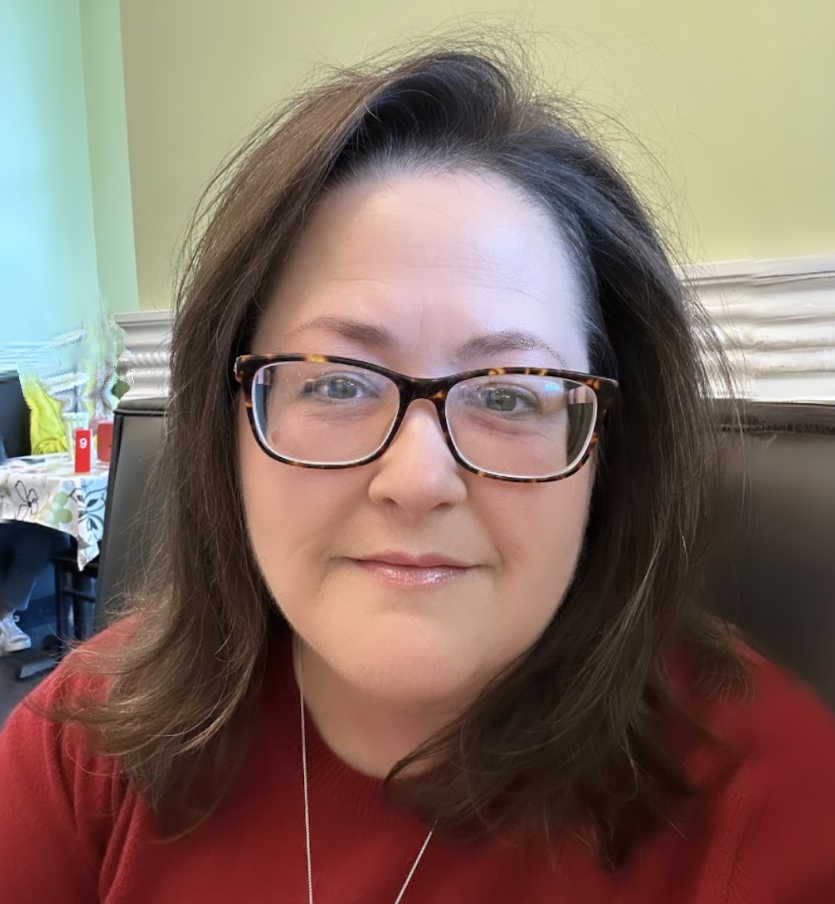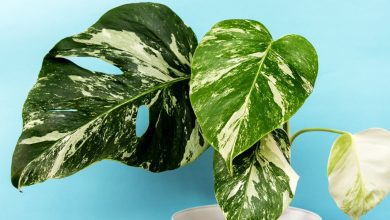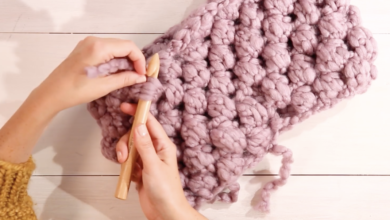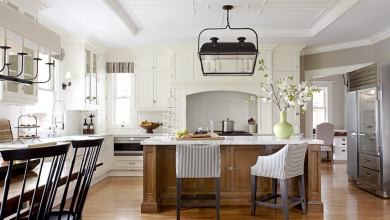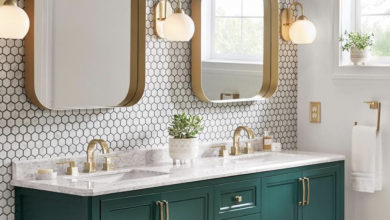How To Mount And Frame A HUGE Print (My 52″ x 78″ Landscape Design Print), Part 2

[ad_1]
I really thought that I could get this project done in to posts, but I didn’t quite get it finished last night. I’ll need one more day to finish up, but I’ll show you the progress and what I have left to do to finish up mounting and framing my HUGE print of our landscape design.
At the end of the last post, I had finished building the big cradled wood panel on the wall. And because it’s so big, and required two pieces of plywood to cover it, I used drywall tape and mud to cover over the joint where the two pieces of plywood meet.

I ended up having to do three coats of drywall mud in all, sanding each coat smooth after it dried.
Then I rolled on two coats of white paint, sanding with 150-grit sandpaper between coats and after the second coat.


With the plywood panel prepped, I was ready to start on the frame. I used 1″ x 4″ pre-primed fingerjoint lumber (because Home Depot was out of 1″ x 3″ boards) ripped down to 2.5 inches wide on my table saw. I cut these pieces 1/4 inch longer than the dimensions of the plywood panel just to give some wiggle room, and I mitered the corners on my miter saw. And then I assembled the frame pieces by gluing and then nailing the corners together with 1.5-inch 16-guage nails in my nail gun. I started with the top piece and the piece on the right side.


I didn’t nail these pieces to the plywood panel at this point. The frame pieces were just glued nailed to each other at the mitered corners.
Next I added the frame piece on the left side. Again, at this point, it was just glued and nailed to the top frame piece at the mitered corners.


And finally, I added the bottom piece. Again, at this point, I only glued and nailed it to the side frame pieces at the mitered corners.


Once the frame was assembled, I went back and nailed it to the edges of the cradled wood panel, but I took my time with this. If you scroll back up and look at the picture of the frame before I attached the bottom frame piece, you’ll notice that the right side frame piece bows out. That’s just the nature of some pieces of lumber. So as I nailed the frame pieces to the panel, I took my time, used my bubble level, and also used a tiny 6-inch prybar as a temporary spacer between the panel and the frame to get the frame piece in just the right position before shooting each nail through the frame and into the edge of the panel. I wanted to make sure I’d end up with a straight frame instead of a bowed frame. I took my time and used that process on both sides. And just as I had planned, I had about 1/8-inch space on each side between the panel and the frame.


With the basic frame on, I was ready to attach the actual landscape design print. I started by getting it into just the right position using these huge thumbtacks that I just happened to have on hand.


It took some patience to get such a huge print squared up just right inside the frame, but I finally got it where I wanted it and tacked it into place on all four sides.
I weighed several different options for adhering the print to the panel, but in the end, I decided that wallpaper paste would the the quickest, easiest, and least messy option. This is my favorite wallpaper paste. I purchase it at Sherwin Williams.


I started at the top and worked my way down. I removed the tacks along the top and uncovered the panel about 1/3 of the way down, just letting the print gently roll forward and making sure it didn’t crease on the way down.


Then using a 6-inch roller, I rolled wallpaper paste onto the panel, and then pressed the print onto the pasted panel. I started by pressing directly up right through the middle of the print.


And then I pressed the sides out towards the edges/top starting from the same place as shown below.


Once the top 1/3 of the print as adhered to the panel, I placed the big tacks back into the top of the print so that the it wouldn’t shift as I worked on the bottom 2/3 of the print. Next, I did the middle 1/3 of the print by removing all of the tacks on the bottom 2/3 of the print, rolling the print up from the bottom, rolling paste onto the middle 1/3 of the panel, and smoothing the print down in the same way I did the top 1/3, except that I was smoothing the print down in the opposite direction.
And then finally, I did the bottom 1/3 by lifting up the print (there wasn’t enough to roll without creasing it this time), rolling the paste onto the bottom 1/3 of the panel, and then smoothing the rest of the print down onto the paste.


As I smoothed out each 1/3 of the print with my hands, and before moving on to the next section, I used a plastic drywall knife to smooth the print to make sure I wasn’t leaving any bubbles. But because I was working with a print on glossy paper, and not wallpaper with a vinyl or tough waterproof coating, I wrapped the edge of the drywall knife with a very soft cloth before pushing it across the print so that I wouldn’t scratch it.


Any time I use wallpaper paste, I inevitably have at least one bubble that I just can’t push to the edge. So in order to get rid of that bubble (or bubbles), I use a straight pin (the kind that you use when sewing) like this one…


And I push the pin into the middle of the bubble, making sure it goes all the way through the wallpaper (or print, in this situation)…


And then I push all of the air out of the bubble through the pinhole. It works every time, and no one will ever see that pinhole.


So that is where the project stands as of this morning. Now I need to finish the frame by adding the decorative trim that will make it pretty and cover up those gaps and the edges of the print. Then I’ll wood fill the nail holes, caulk the corners and joints between trim, prime, and paint the frame.


This thing is huge, and I love how it look on the wall! And just for reference, I’m five feet tall, and I come up to this point on the print. 


I’m going to do my very best to get this finished today. I’ll be adding two different decorative trims to complete the frame. It won’t be difficult, but I very often overestimate how much I can get done in a day. 
Addicted 2 Decorating is where I share my DIY and decorating journey as I remodel and decorate the 1948 fixer upper that my husband, Matt, and I bought in 2013. Matt has M.S. and is unable to do physical work, so I do the majority of the work on the house by myself. You can learn more about me here.
[ad_2]
Source link


